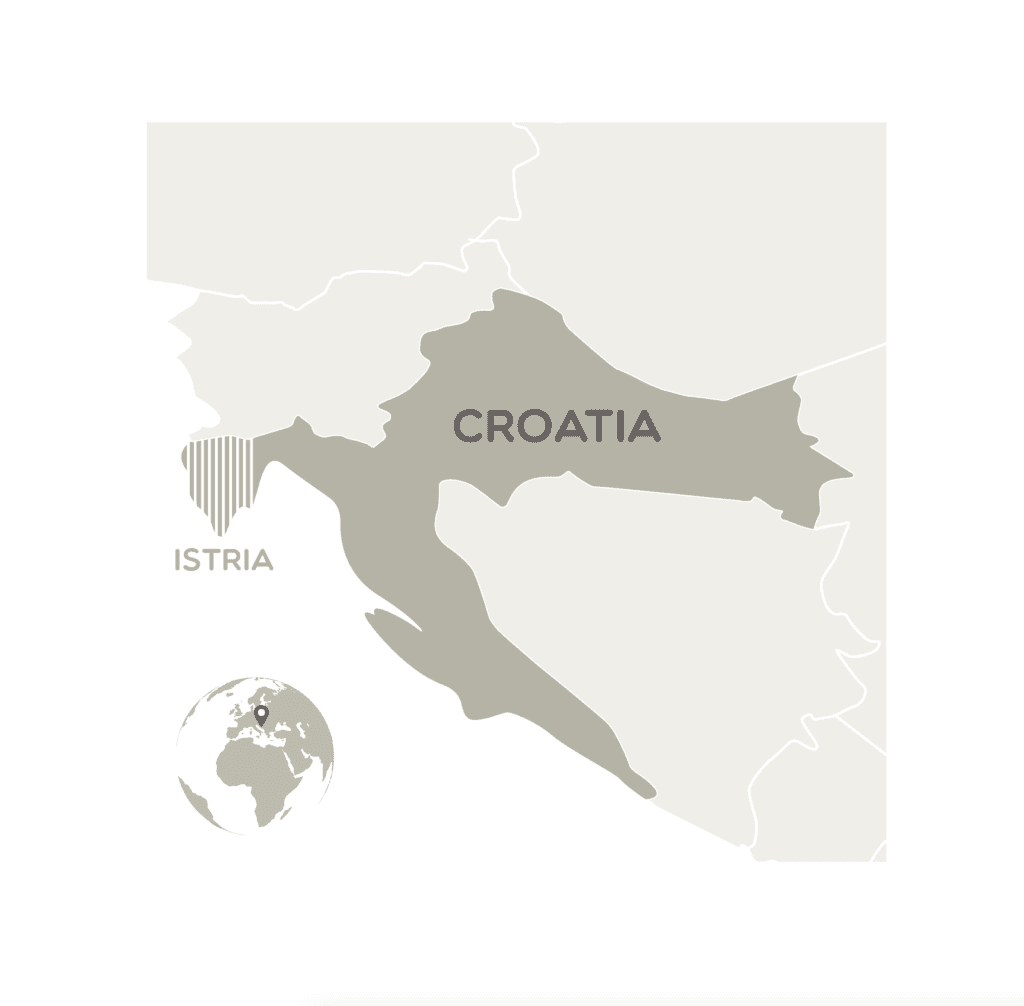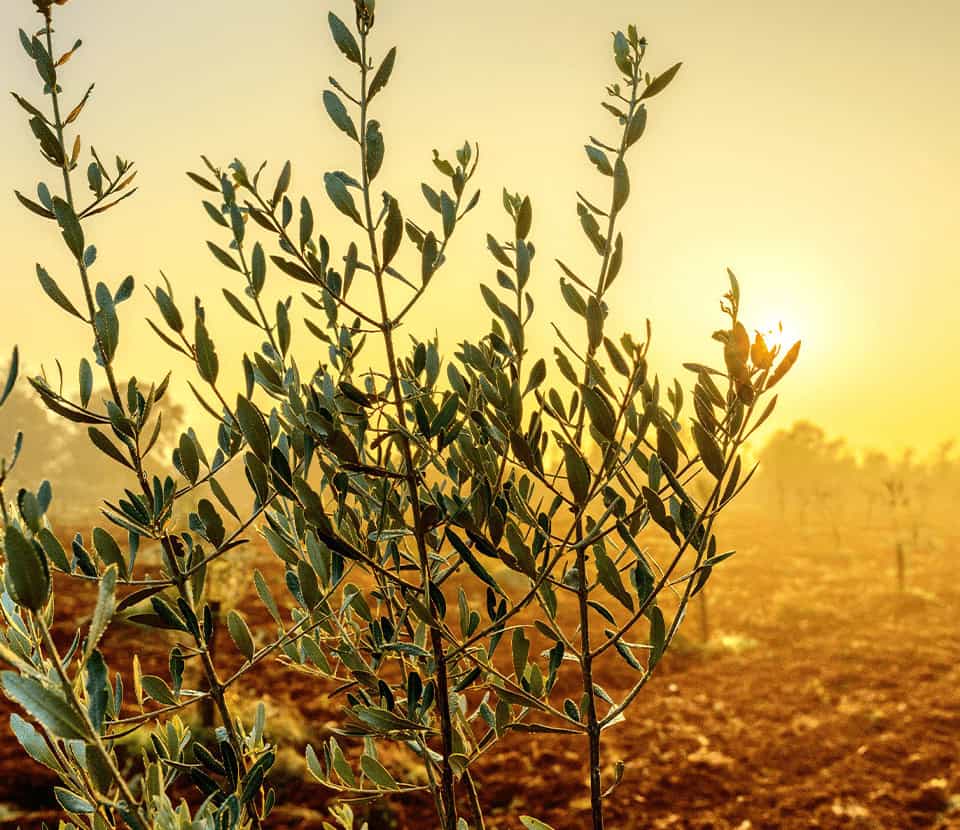What’s all the buzz about Croatian olive oil? Well, did you know that independent producers from Croatia, formally part of Italy (more on this soon), make more than 450 tons of olive oil annually? Their oil is adored domestically and around the world. Flos Olei, which is considered by some to be “the Bible of Extra Virgin Olive Oils” and created by gastronomy journalist and agricultural engineer Marco Oreggia, named Istria, Croatia as the world’s best olive oil region for eight years in a row.
 Let’s zoom into Croatia together. This country with its jagged border occupies a long strip of the southern European coast, just east of Italy (and quite close to Venice). The region of Istria parted ways from Italy in the 1950s and quietly became part of Croatia and Slovenia (in former Yugoslavia) – until they both became independent nations in 1991.
Let’s zoom into Croatia together. This country with its jagged border occupies a long strip of the southern European coast, just east of Italy (and quite close to Venice). The region of Istria parted ways from Italy in the 1950s and quietly became part of Croatia and Slovenia (in former Yugoslavia) – until they both became independent nations in 1991.
Now, if we stay on the north coast of Croatia and move down the first peninsula into the Adriatic Sea, we find ourselves in Istria. This is one of the most prolific and unique olive producing regions in the world – and the most economically vibrant region in Croatia. At the very bottom tip of this peninsula lies the city of Pula, the largest in Istria. This city was settled thousands of years ago and valued for its strategic location. It was destroyed and rebuilt several times, and often changed hands depending on who was in control of the area at the time (including occupation during the second World War). Pula is known for its protected harbor, seafood, and Roman influence and ruins.
 Even though Istria has undergone much political shape shifting, its people remain rooted and proud with a strong connection to the place. The younger generation within the olive oil industry is driving important positive change. What else makes Istrian olive oil so exceptional? The climate and the soil play crucial roles. The earth is made of mostly red clay, colored by limestone and iron, and rich in many other nutrients. The region has slightly sloping hills and strong winter winds that keep moisture away and prevent fungus and other pathogens. Istria gets surprisingly cold winters, which force the olive trees to develop a hardiness. This environmental stressor is particularly effective in the growth and proliferation of olives that are high in polyphenols (a prized health benefit in olive oil).
Even though Istria has undergone much political shape shifting, its people remain rooted and proud with a strong connection to the place. The younger generation within the olive oil industry is driving important positive change. What else makes Istrian olive oil so exceptional? The climate and the soil play crucial roles. The earth is made of mostly red clay, colored by limestone and iron, and rich in many other nutrients. The region has slightly sloping hills and strong winter winds that keep moisture away and prevent fungus and other pathogens. Istria gets surprisingly cold winters, which force the olive trees to develop a hardiness. This environmental stressor is particularly effective in the growth and proliferation of olives that are high in polyphenols (a prized health benefit in olive oil).
We have discovered olive oils from Istria, Croatia that are phenomenal, so we are thrilled to add not one, but two top quality extra virgin olive oils from this region to our Collection.
One producer’s brand we are proud to introduce to you is Istriana, whose founder’s story is the pursuit of an authentic dream working side by side with locals to create the expression of Istria in a bottle. With true reverence for the Istrian people and landscape, Istriana is a project begun from the ground up. The rich red soil from the land is even painted onto each unique bottle of organic olive oil.
 Another standout producer is Stanjica San Antonio, run by a husband-and-wife team whose priority is sustainability and quality. The San Antonio olive oil production is full-cycle and zero-waste. They produce a blend as well as a line of indigenous single varietal olive oils.
Another standout producer is Stanjica San Antonio, run by a husband-and-wife team whose priority is sustainability and quality. The San Antonio olive oil production is full-cycle and zero-waste. They produce a blend as well as a line of indigenous single varietal olive oils.
Both producers grow native olive varieties, draw on local agricultural knowledge, and are focused on quality and sustainability. They honor the rich history and traditions of Istrian olive oil production while incorporating modern technology. Stay tuned in the coming weeks as we dive deeper with these two producers and bring you their authentic stories from Istria, Croatia.